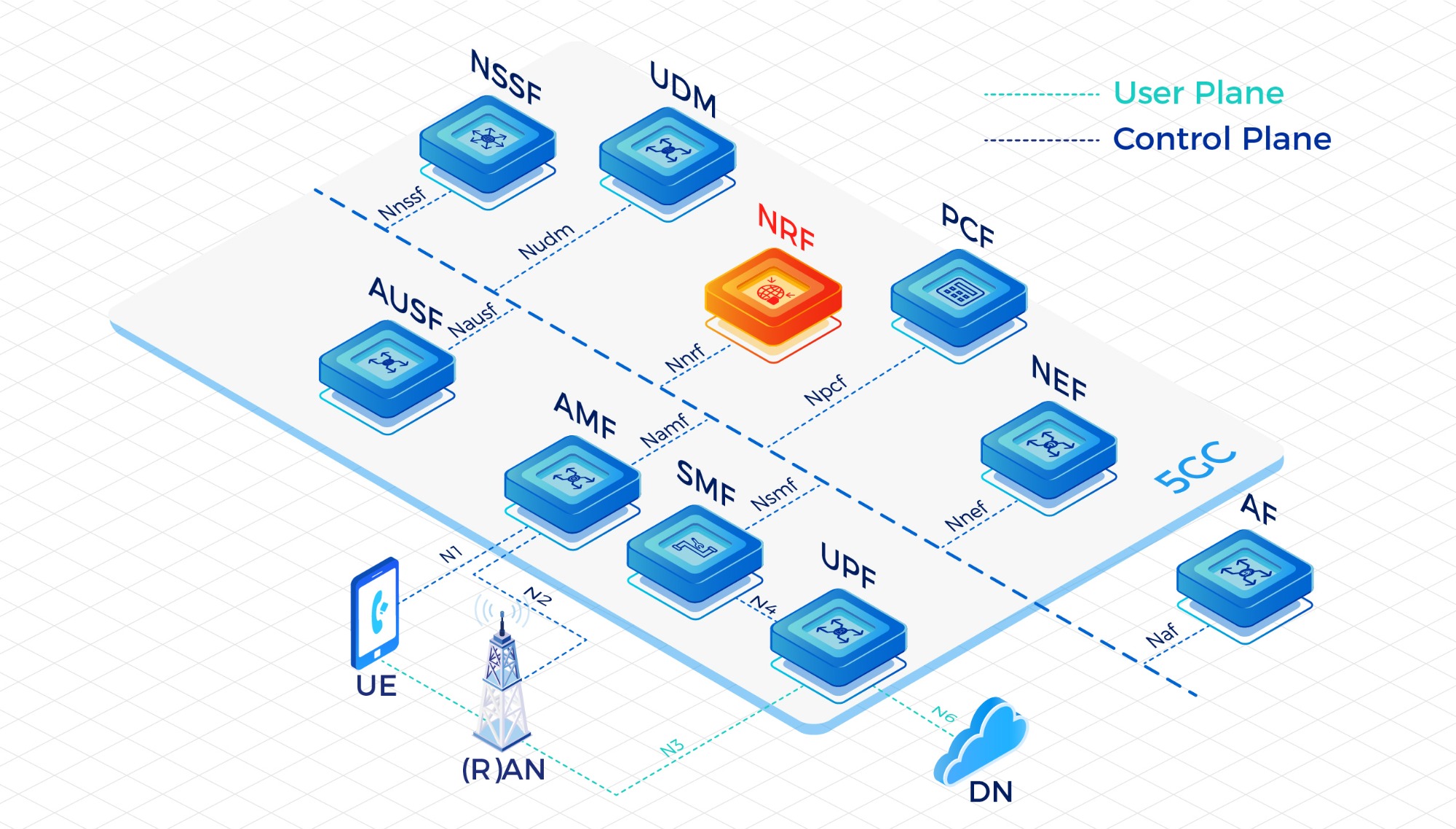
In the digital city of 5G, countless network functions must work together: AMF manages access, SMF coordinates sessions, UPF forwards traffic, and PCF enforces policies. But before they can collaborate, they must be able to find one another. This is the role of the Network Repository Function (NRF). Acting as the “directory” of the 5G Core, NRF enables registration and discovery, keeping the network flexible and intelligent.
The Core Responsibilities of NRF
NRF is the central hub for network function registration and discovery. It does not process user data directly but ensures that every function — from AMF to PCF — can be identified and reached. By registering with NRF, each network function announces its capabilities, while others rely on NRF to locate available partners.
1. Registration of Network Functions
When a new network function comes online, it registers its profile with NRF, including service type, location, and availability. This transforms the 5G Core into a dynamic, service-based system where functions can join or leave without disrupting the network.
2. Service Discovery and Selection
When AMF needs an SMF or SMF needs a PCF, they query NRF instead of attempting random connections. NRF returns a list of available instances, allowing functions to select the most suitable partner for efficient communication.
3. Enabling Resilience and Redundancy
NRF also enhances network resilience. If one instance becomes overloaded or fails, NRF directs traffic to healthy alternatives. This ensures continuous service, even during spikes in demand or node failures.
Inside the NRF Workflow
When a new AMF node launches, it registers its services with NRF. Later, if SMF needs to connect to an AMF, it queries NRF and selects the best instance. If the AMF’s status changes, it updates NRF so the directory always reflects real-time availability. Once it goes offline, it deregisters, preventing broken connections.
Why NRF Matters in 5G
NRF makes the 5G Core cloud-native by allowing functions to appear or disappear dynamically. It streamlines service discovery, reducing dependency between components. And by supporting multi-instance deployments and redundancy, NRF ensures scalability and reliability at massive scale.
NRF in Real-World Applications
In cloud-based cores, NRF enables elastic scaling by managing NF(Network Function) discovery. In network slicing, it ensures services are correctly isolated and connected. At the edge, NRF helps devices locate the nearest NF for low-latency performance. And in failure scenarios, NRF redirects requests to healthy nodes, keeping critical services running.
NRF: The Silent Guide of the 5G Core
NRF may not handle traffic itself, but it quietly powers the network by helping functions locate and connect with each other. As 5G evolves toward 6G and microservice-based design, NRF will remain the network’s central guide, ensuring smooth collaboration across all functions. Without it, the 5G Core would be a city without a map — complex, but directionless.

